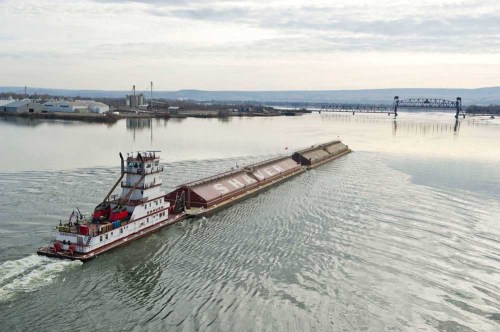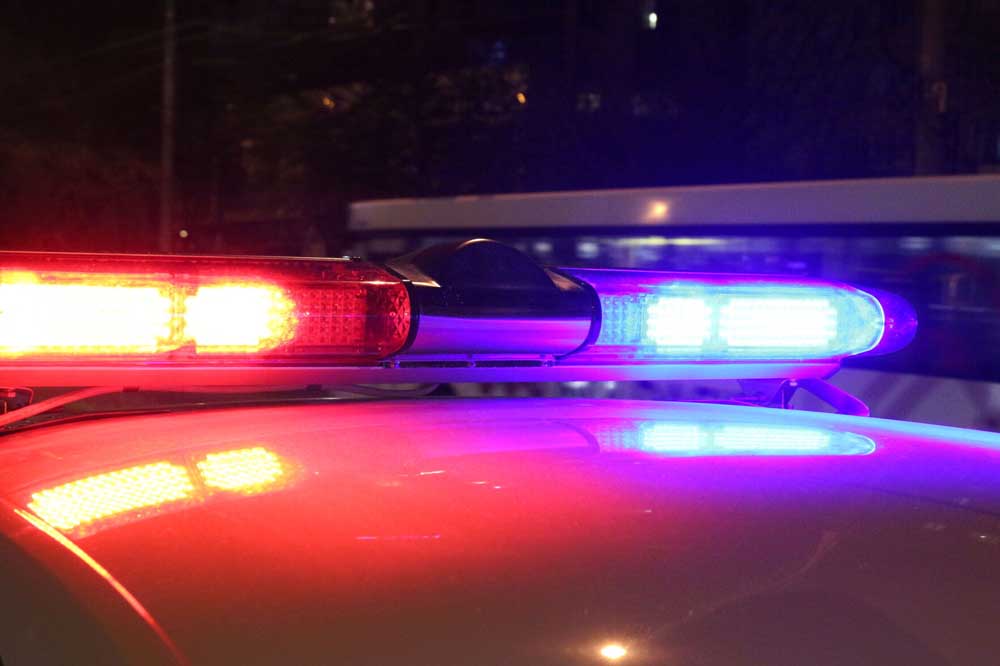Port of Walla Walla officials pursue tax increment area for economic growth
Published 7:30 pm Friday, October 20, 2023

- A barge moves commodities on the Snake River near the Port of Walla Walla property in Burbank, Washington.
WALLA WALLA — The Port of Walla Walla is on the cusp of finalizing its plans for the creation of a Tax Increment Financing Area on property the port owns near Burbank and Wallula Gap, Washington.
Covering an extensive area that spans properties within the Attalia Urban Growth Area, including the Wallula Gap Business Park, and sections of the nearby Burbank Urban Growth Area, this project encompasses a total of 5,877.2 acres.
Trending
Pat Reay, executive director of the Port of Walla Walla, said developing the area is essential for the port’s mission to boost the county’s economic vitality by creating and retaining family wage jobs.
“Tax increment financing is an economic tool that allows for strategic public investment,” Reay said. “This will stimulate significant private investment that would not otherwise occur.”
Several infrastructure projects are required for the development of the industrial parcels, including expansion and improvements to water and sewer systems, road and highway extensions, rail enhancements, sidewalk and lighting extensions, renewable energy projects and more.
The estimated cost of these projects is $260 million in today’s dollars, with tax allocation revenues from the proposed TIA being a funding source. However, accounting for inflation and interest on debt, additional funding sources might be needed to cover the project costs.
The Burbank Business Park already has a number of retail spots for general merchandise.
“The Burbank and Wallula Gap areas are the obvious spots for the Port of Walla Walla to create a TIA,” Reay said. “With the infrastructure we already have there and the low assessed vacant ground, it’s a great spot for future investments.”
Trending
How TIA works
Tax increment financing, or TIF, is used to create a TIA district. When this happens, the local government freezes the property tax revenue that the area generates at its current level. As new development takes place in the area, the added property tax revenue generated by that development goes into a special fund that can be used to pay for infrastructure improvements, public amenities or other development-related costs.
In other words, the property tax revenue that would normally go to the general fund is redirected to pay for infrastructure development in the district. Once those projects are completed and the TIA district expires in 25 years, the property tax revenue returns to the general fund.
Reay said the port has taken a slower and more methodical approach to establishing the TIA.
“We’re not in a hurry to go through the process,” he said. “We have spent a lot of time on the economics; that’s all forecasts thought.”
The port is required to schedule two public briefings on the proposed tax increment area. The first meeting was Tuesday, Oct. 3.
The next public briefing will be at 6 p.m. Tuesday, Oct. 24, at the Columbia School District Boardroom located in the district office, 755 Maple St. in Burbank.
Impacts and controversy
The Port of Walla Walla is working with Tiberius Solutions, a limited liability corporation specializing in infrastructure funding and tax increment financing.
TIF can be a controversial tool because it essentially diverts tax revenue from other public services to fund private development. However, the port’s draft proposal argues that TIF can be an effective way to promote economic development in underdeveloped or undeveloped areas and attract new businesses and jobs.
According to the project analysis draft, the proposed TIA is anticipated to receive $122.6 million in tax allocation revenues over a 25-year period, concluding in 2049. The net impact on taxing district levies is estimated at $117.5 million, which is less than the total tax allocation revenues received. The TIA will collect tax allocation revenues from specific levies, including Walla Walla County Current Expense and Public Works General Fund, Fire District No. 5, Port of Walla Walla, Rural Library General Fund and Emergency Medical Services Levy.
Certain levies, such as state schools and Burbank School District General Fund, debt service fund, and capital projects fund, will remain unaffected by the proposed TIA and could even benefit from additional property tax revenues from new private developments within the TIA once construction is completed.
However, some districts stand to lose tax revenue.
Walla Walla County, particularly the expense and public works general fund, is estimated to lose about $36 million over the 25-year TIF period, while Fire District No. 5 is projected to lose $28 million within the same timeframe.
Reay said the port has been working with the agencies, specifically Fire District No. 5, to help mitigate some of the TIA impacts.
”We have had one-on-one discussions with the stakeholders, and unfortunately, the impact is based on forecasts,” Reay said. “What the reality is has yet to be determined because it is going to take investments by the port and private investors.”
Revenue generated by a TIA primarily results in the redistribution of existing property tax collections rather than introducing a new property tax levy on taxpayers.
However, the state permits taxing districts to modify their levies to accommodate rising property values within a TIA, which may lead to slightly higher overall levy amounts and tax rates for those districts. This might result in a modest increase in tax bills for property owners within the port district.
”The investments that we are going to make are standard public infrastructure such as water, sewer and industrial water and waste processing facilities,” Reay said. “We are competing against a global economy to bring jobs and improvements. We’ve been making improvements in that area for the last decade, and we plan to continue that; this just gives us the ability to fund them.”
The next public briefing will be at 6 p.m. Tuesday, Oct. 24, at the Columbia School District Boardroom located in the District’s office, 755 Maple St. in Burbank. Residents can participate remotely by calling into the public meeting at 877-309-2073 and using access code 270-947-181 or participate remotely via video at bit.ly/3PZDlTr.









